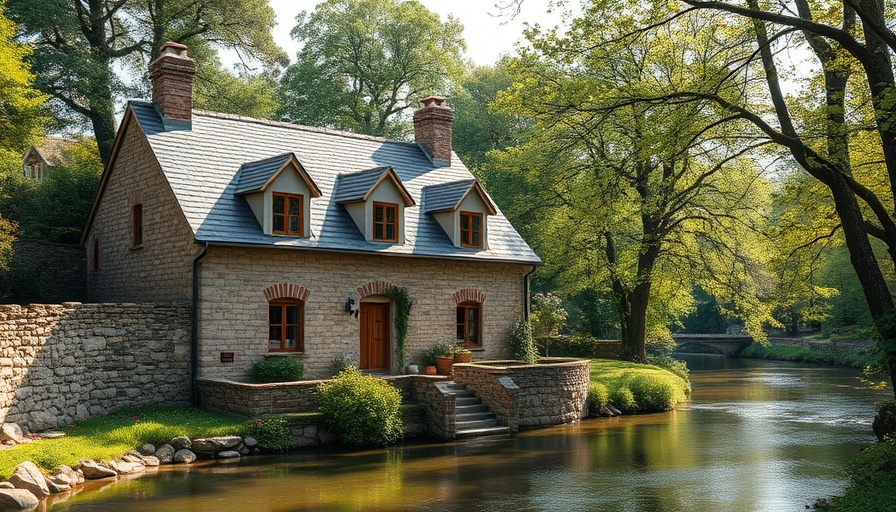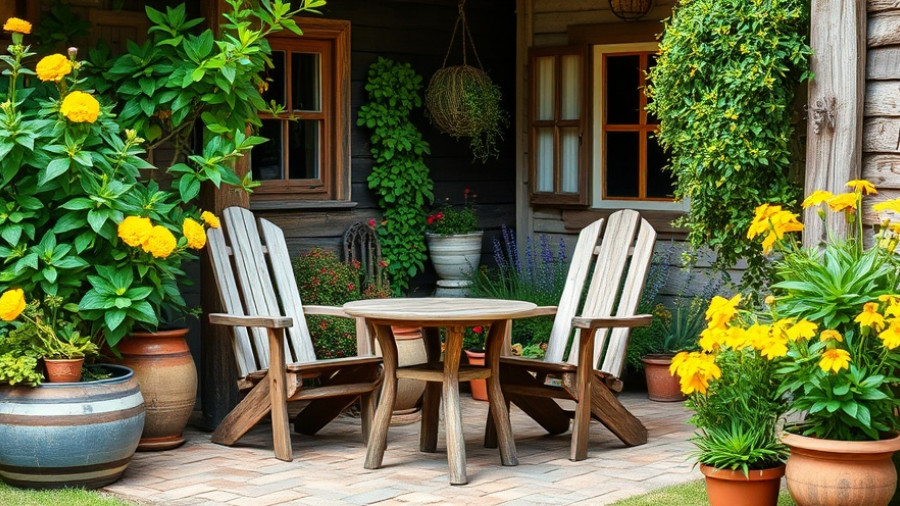
Rediscovering the Timeless Appeal of Stone Houses
Imagine waking up each morning surrounded by the gentle whispers of trees, with sunlight streaming through their branches, and the solid embrace of ancient stone walls. This is not merely a house; it is a sanctuary that fosters a profound connection between architecture and the natural world. Stone houses possess a timeless allure that blends traditional craftsmanship with modern necessity, evoking both strength and serenity. With environmentally conscious homeowners increasingly seeking spaces that reflect their values, it’s essential to explore how these homes harmoniously coexist with their surroundings.
In 'A Timeless Rustic Stone House in Perfect Harmony With Nature’s Beauty,' the discussion dives into how thoughtful design can enhance our living spaces through natural materials—and we’re breaking down its key ideas while adding our own perspective.
Natural Materials That Inspire
Stone serves as a primary material in various architectural styles, from quaint cottages to grand estates, showcasing its versatility and durability. Using local quarried stone not only enhances aesthetic appeal but also supports sustainability efforts by reducing transportation emissions. Such homes can be energy-efficient, relying on stone's natural insulating properties. By using materials that resonate with their surroundings, homeowners can create a dwelling that echoes the beauty of the environment while being distinctively their own.
Insights on Blending Home and Landscape
A design strategy that integrates a stone home into its natural habitat can elevate the living experience. Choosing native plants for landscaping, designing pathways that mirror the lines of the property, and incorporating water features will help to create a seamless visual transition between home and garden. Such strategies foster a sense of belonging, where the home becomes a continuation of the landscape rather than an imposition upon it.
Rustic Charm: Embracing Imperfections
Rustic charm thrives on natural imperfections, celebrating the unique characteristics of stone. Elements like aged wood, vintage fixtures, and climbing vines enhance the tactile experience of the home’s exterior. Matching color palettes and textures can create a visual narrative that feels both timeless and inviting. The rustic aesthetic resonates strongly with those who appreciate the beauty of simplicity and the history wrapped up in each stone.
Indoor Comfort Through Natural Elements
Stone interiors can transform spaces by offering warmth and stability. Using stone features as focal points in rooms can enrich a home’s character. Pairing these elements with rich wood furnishings and soft textiles provides contrast that invites comfort. Homeowners can choose styles such as farmhouse, contemporary rustic, or Mediterranean, ensuring that stone complements the overall aesthetic rather than overwhelming it.
Transforming Outdoor Spaces
Outdoor areas can become functional retreats with the addition of stone features. Creating stone patios for relaxation, outdoor kitchens with stone accents, and fire pits surrounded by seating walls enhances both social and private spaces. Thoughtful lighting and plant arrangements around these features ensure the outdoor areas are as inviting as the interiors.
Creating Sustainable and Efficient Designs
Today's stone houses can incorporate sustainable practices, such as rainwater harvesting, solar panels, and green roofs. These features, when combined with stone’s efficiency, can reduce the overall environmental impact of a home. By employing reclaimed materials, like wooden flooring and recycled metal, homeowners will craft a living space that looks beautiful while positively impacting the environment.
Maintenance: Caring for Your Stone Sanctuary
To maintain the beauty and integrity of a stone house, homeowners must adopt careful care practices. Routine cleaning, preventing moisture infiltration, and routine inspections of mortar joints are essential tasks. Adapting these practices according to seasonal changes can preserve the structure's charm and durability, allowing it to thrive through generations.
Cultural Significance: Stories Encased in Stone
Each stone house is steeped in history and craftsmanship, representing both past traditions and present innovation. Understanding the cultural significance of stonework across different regions can foster appreciation for these homes. By respecting traditional techniques while implementing modern conveniences, homeowners can honor the legacy of stone construction—an expression of resilience that speaks through the ages.
Bringing It All Together: The Natural Harmony of Stone
The beauty of a stone house lies not just in its form but its ability to create a sanctuary deeply integrated with the natural world. Thoughtful design transcends fleeting trends, allowing homeowners to embrace a living space that nurtures the soul. As we reflect on the marriage of design and the environment, consider how your own home can resonate with the beauty of nature.
Are you inspired by the timeless harmony of nature and home? Explore your creative potential by integrating sustainable design elements into your space. Your home can tell a story through its materials and the care you invest, transforming it into a personal sanctuary that embraces both tradition and innovation.
 Add Row
Add Row  Add
Add 



Write A Comment